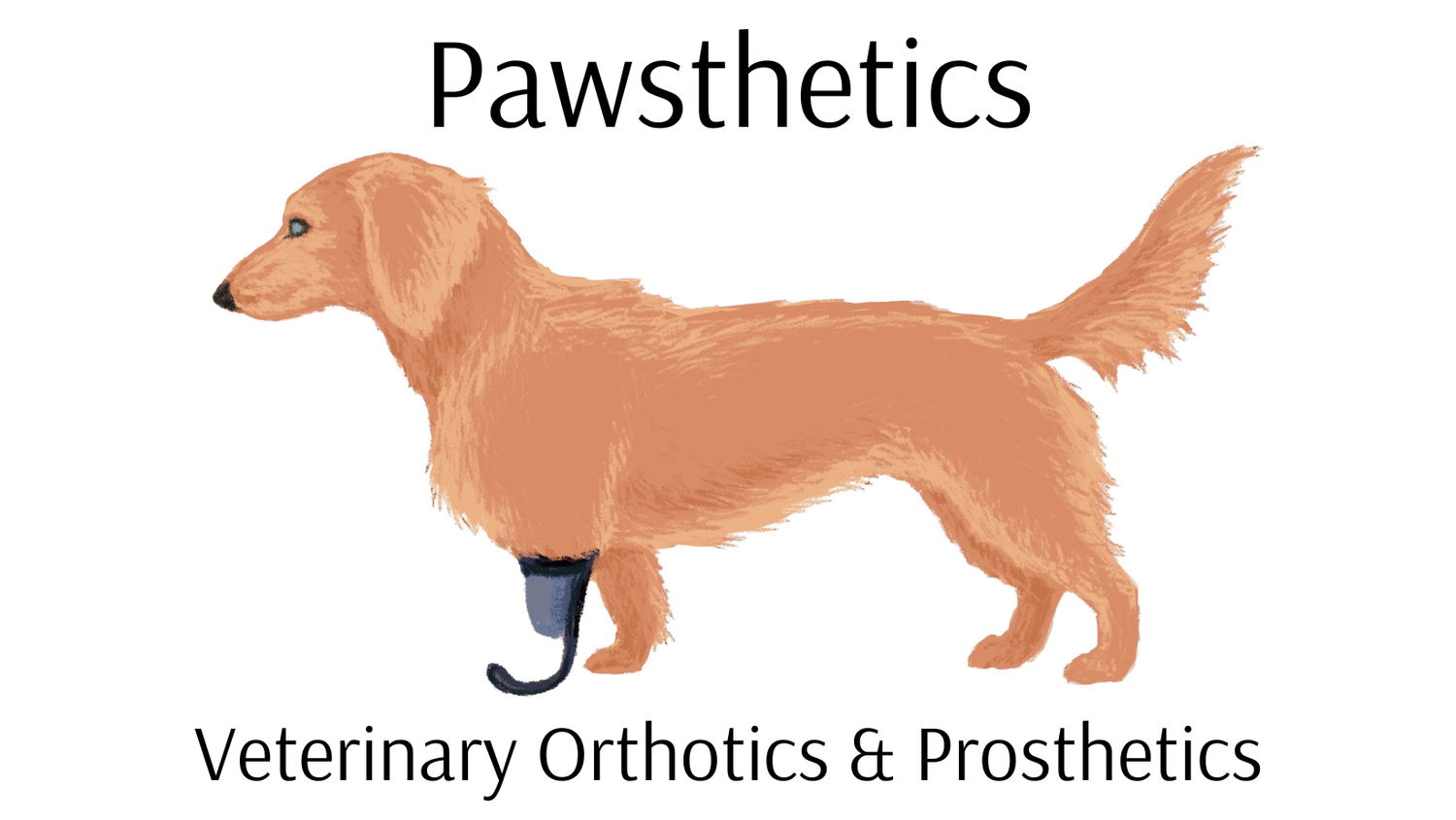Prosthetic Interventions for Animals Missing a Limb
Missing part of a limb
An OrthoPets Prosthesis (animal prosthetic leg) can be a great solution providing mobility and restoration of your pet/patient’s comfort and biomechanics. The old saying that a 3-legged dog does fine has been disproven through advanced research at Colorado State University among other research facilities. 4-legged animals do better and suffer less compensatory problems than their 3-legged friends.
There are many reasons why a pet/patient presents with a missing a leg including trauma, congenital deformity, or related orthopedic and oncological issues. Regardless of the reason, OrthoPets fabricates a custom state-of-the-art prosthesis for each animal’s specific needs.
OrthoPets will evaluate the animal’s residual limb, patient goals, and medical history to determine if the pet/patient is an appropriate candidate for our innovative prosthetic solutions. Considerations for candidacy include amount of remaining limb, condition of remaining anatomical joints, condition of the skin along the end of the remaining limb, and evaluation of the radiographs (x-rays) of the limb.
Through the appropriate application and use of an OrthoPets Prosthetics (animal prosthetic leg), coupled with rehabilitation therapy, your pet/patient can regain lost quality of life, mobility, comfort, and function.
Front leg prosthetics
In order for a pet/patient to be a candidate for a front leg prosthetic device, there are three minimum requirements needed:
The pet/patient needs to have at least 40-50% of the radius and ulna remaining so that the pet/patient can control the prosthetic. Less than this amount of radius and ulna means the patient is unable to control the length of the socket prosthesis with its forearm.
The pet/patient must have a functional elbow joint in order to control the prosthesis. This means that the pet/patient needs to have full control over its muscles and condition of the elbow joint must be amenable to use of the limb during weight-bearing.
The prosthesis must be able to gain purchase and suspension from the humerus. This requires access to the medial side of the humerus approaching the patient’s armpit.
Back leg prosthetics
In order for a pet/patient to be a candidate for a back leg prosthetic device, there are three minimum requirements needed:
The pet/patient must have at least 40-50% of the tibia and fibula remaining so that the patient can control the prosthetic. Less than this amount of tibia and fibula means the patient is unable to control the length of the socket prosthesis.
The pet/patient must have a functional stifle and hip joint in order to control the prosthesis. This means that the patient needs to have full control over its muscles and condition of the stifle and hip joints must be amenable to use of the limb during weight-bearing.
If the amputation or limb deformity is above the tarsus joint, the prosthesis will gain purchase and suspension onto of the pet/patient’s lumbar spine and a contralateral femoral cuff. This requires access to the medial side of both femurs and the pet/patient’s ability to wear a chest harness.
If the amputation or limb deformity is below the tarsus joint (pet/patient presents with both medial and lateral malleoli and the calcaneus, the prosthesis will gain purchase and suspension above these bony landmarks.
